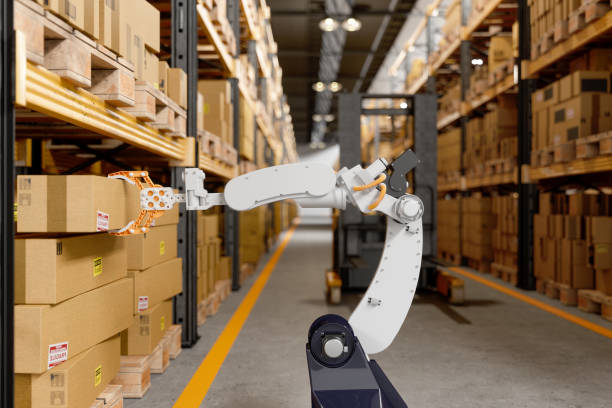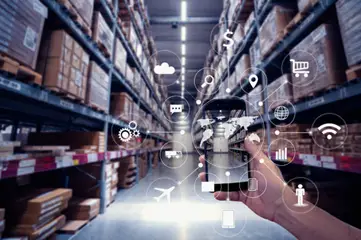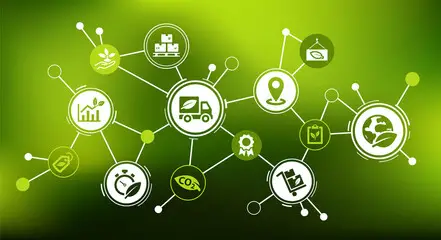The pandemic has exposed the supply chain and logistics industry to an unprecedented level of risks. Businesses are now dealing with frequent supply chain breakdowns and inefficiencies. How can we make our supply chains less susceptible to these disruptions? We can proactively adapt our strategy to the latest technology trends which impact the supply chain to make them more agile and sustainable, overcome the labor shortages, streamline inventory management and sourcing, and make the supply chains more customer-centric. Let us delve deeper into some of the biggest technology trends that are likely to redefine your supply chain in 2022:
1. Circular Supply Chains
This latest trend is currently making the new buzz and will soon replace the linear supply chains. But what are circular supply chains? When we talk of a circular supply chain, the manufacturers refurbish the products which are discarded for resale which helps in dealing with the increasing cost of raw materials, lesser price volatility, and less wastage for the environment.

2. Automation And Analytics
Automation can help make your supply chain more efficient by improving the demand forecast, eliminating human errors, and management of inventory. You can also use AI to improve your workers’ productivity and enhance the development of the product. We can now see the use of autonomous mobile robots in warehouses which helps in the automation of redundant and labor-intensive work.

3. Agile Supply Chains
Global trade issues, tariffs, and the need for sustainability have compelled the supply chains to be more agile. Why do we require agile supply chains? Agile supply chains are responsive to the volatility of availability and the costs of raw materials. When the supply chains are agile, you can respond faster to the dynamic customer demand and drive better growth. Supply chain modeling solutions can help better forecast scenarios and identify the problems accurately.

4. Digital Supply Chains
Digital supply chains are essential when it comes to making your supply chain transparent and agile. The digitized supply chains improve decision-making and augment the data collection process. The use of the latest technology tools such as artificial intelligence, machine learning, and blockchain can digitize the supply chain. An optimal digital supply chain requires the internet of things and cloud-based networks.

5. Supply Chain Workforce Talent
According to a study by Capgemini, about 80% of manufacturers will need operations in more than 1 country. Take for instance the average growth rate for the logistics managers alone in the US is around 4%. What factors are driving the need for supply chain talent? The need for knowledge workers who can handle complex processes involving analytics, and procurement processing, are driving the requirement for global supply chain talent.

6. Last-Mile Delivery
Why are brands emphasizing the last-mile delivery? According to Economic Forum, the demand for last-mile delivery and its market is expected to grow by about 78% by 2030. The last-mile delivery costs form approximately 50% of total shipping costs which has led to an increase in the adoption of last-mile delivery technologies in their logistics operations with an upward trend in 2022.

7. Supply Chain As A Service Or SCaaS Business Models
Many businesses are adopting Supply Chain as a Service business model (SCaaS). Why is the SCaaS business model becoming popular? The supply chain teams are shifting towards becoming more focused and skilled in making strategic decisions for improvement in the supply chain. The growth in skilled supply chain teams will increase the use of control towers which give the supply chain managers a holistic view of the supply chain.

8. Supply Chain Integration
We will soon be witnessing increasing partnerships and integrations with third parties. Why? Such partnerships help companies lower their costs and enhance customer service. According to Supply Chain Dive, businesses will integrate and offer inland services which will help reduce their freight costs and streamline their supply chain. Integration of services makes the delivery times shorter and improves customer service.

9. Omnichannel & E-commerce Systems
The rise in e-commerce is the most dominant trend which is affecting the supply chains today. It will help identify the key priorities and produce new opportunities and technology to gain a competitive advantage. As per a McKinsey survey, about 15% of consumers emphasize delivery speed and value. This will lead to the omnichannel world of retail more innovation and make the existing technology easier.

10. Sustainable Supply Chains
Did you know that 60% of consumers are ready to pay a premium for sustainable products? The rise in green consumerism has led brands and products to adopt sustainable and greener supply chains. According to a report by Nielson, the businesses adopting sustainable efforts also gain more when it comes to profit and customer loyalty.

Enjoying the article. Do like and comment on Disque.


















